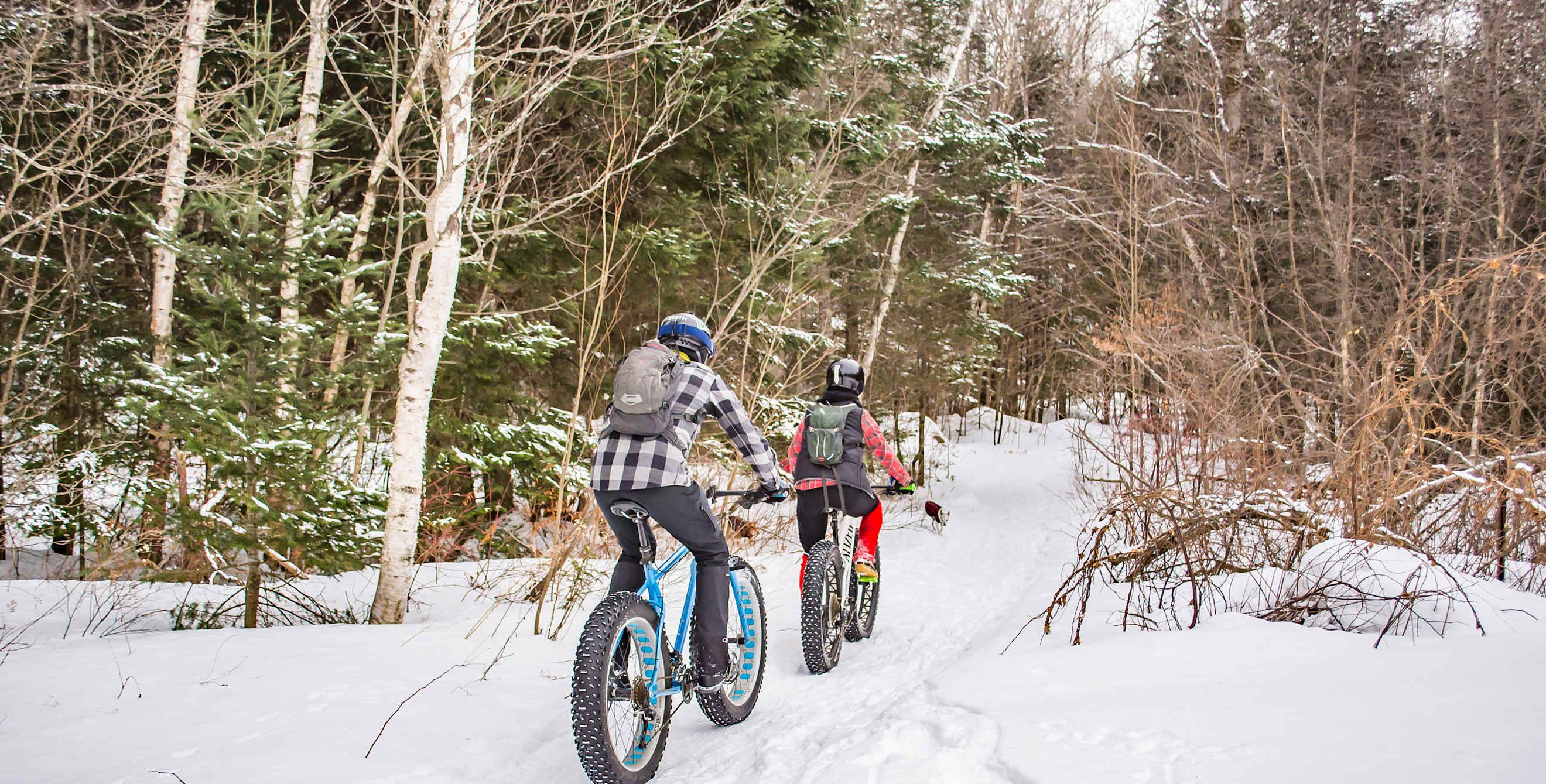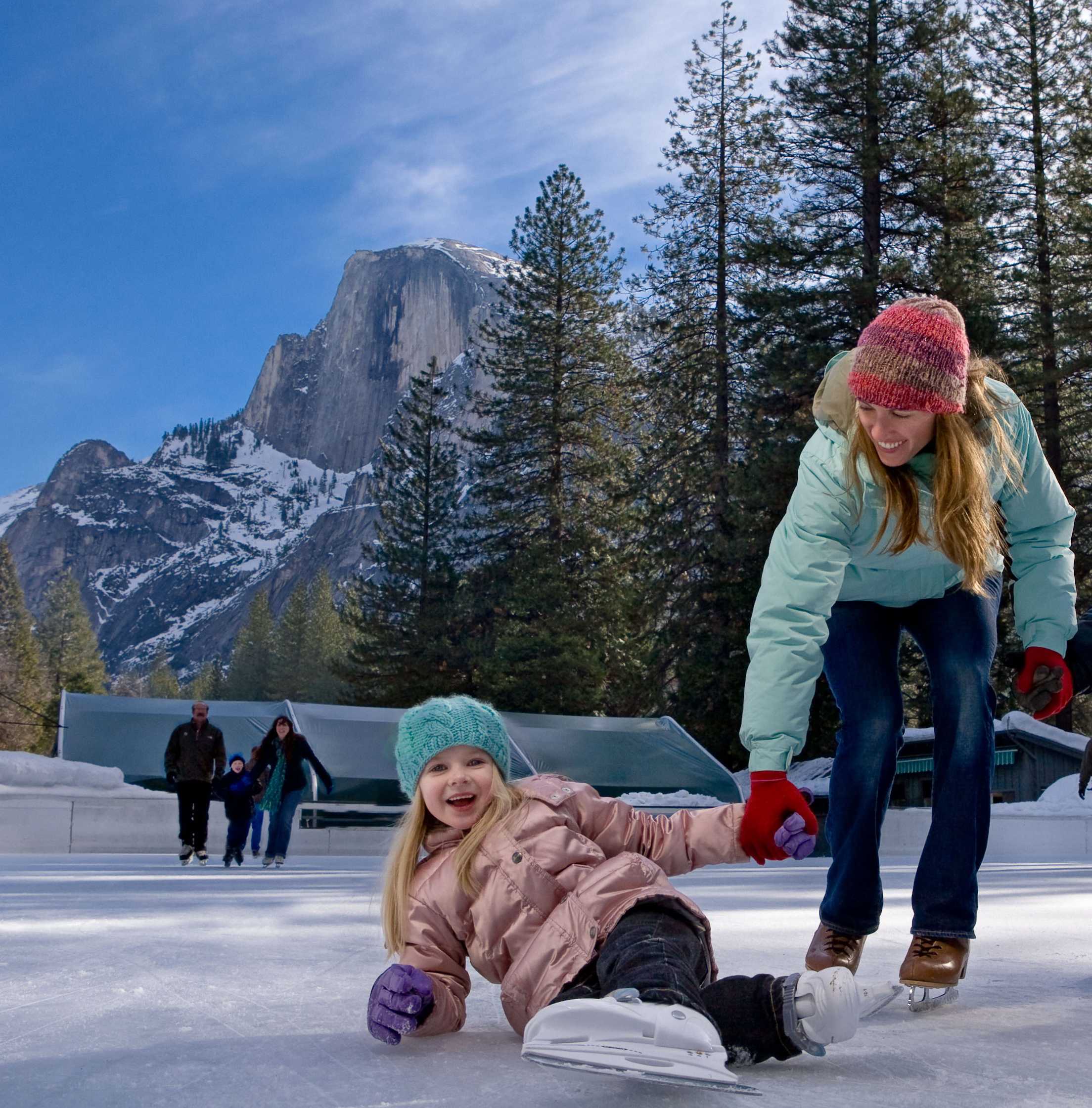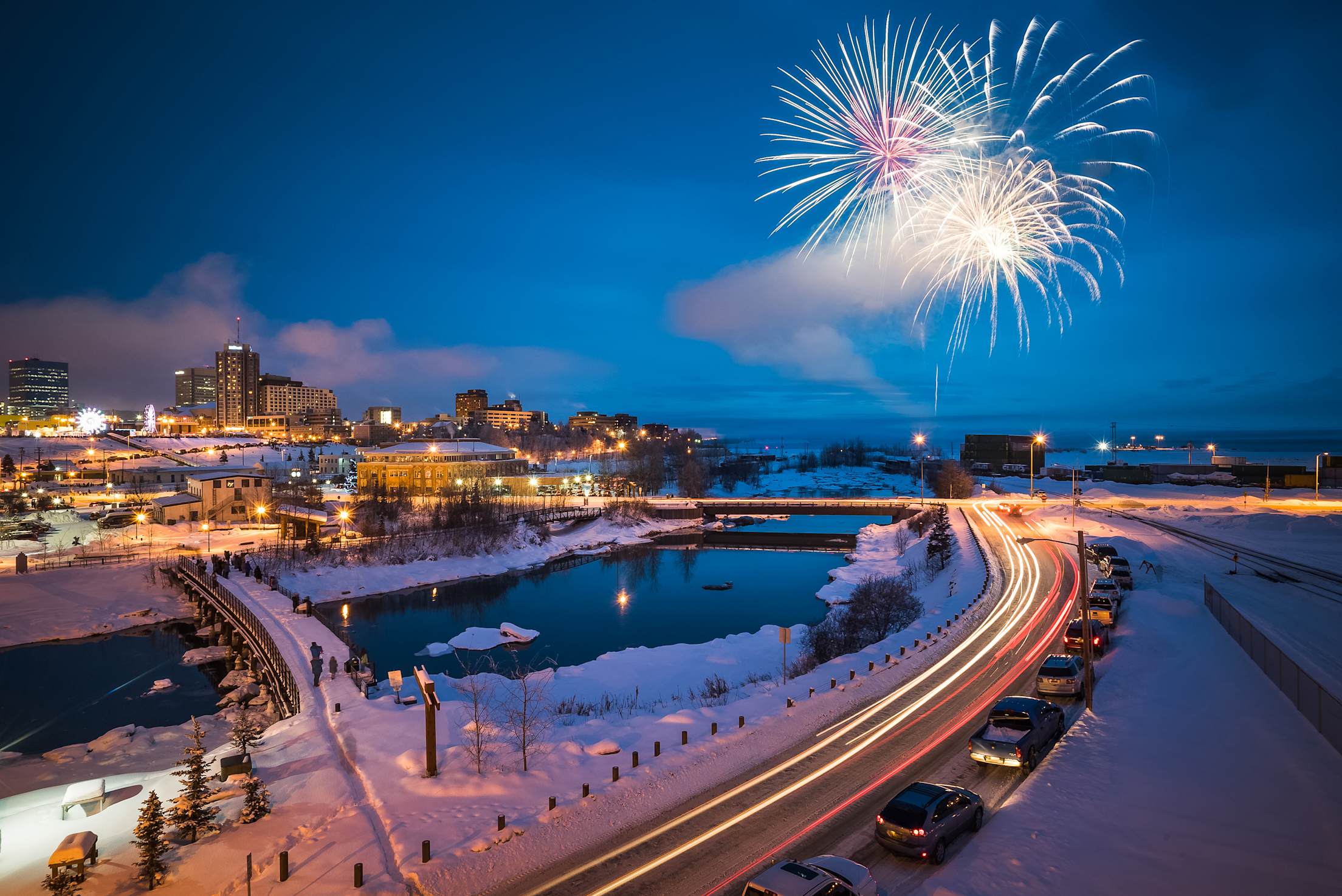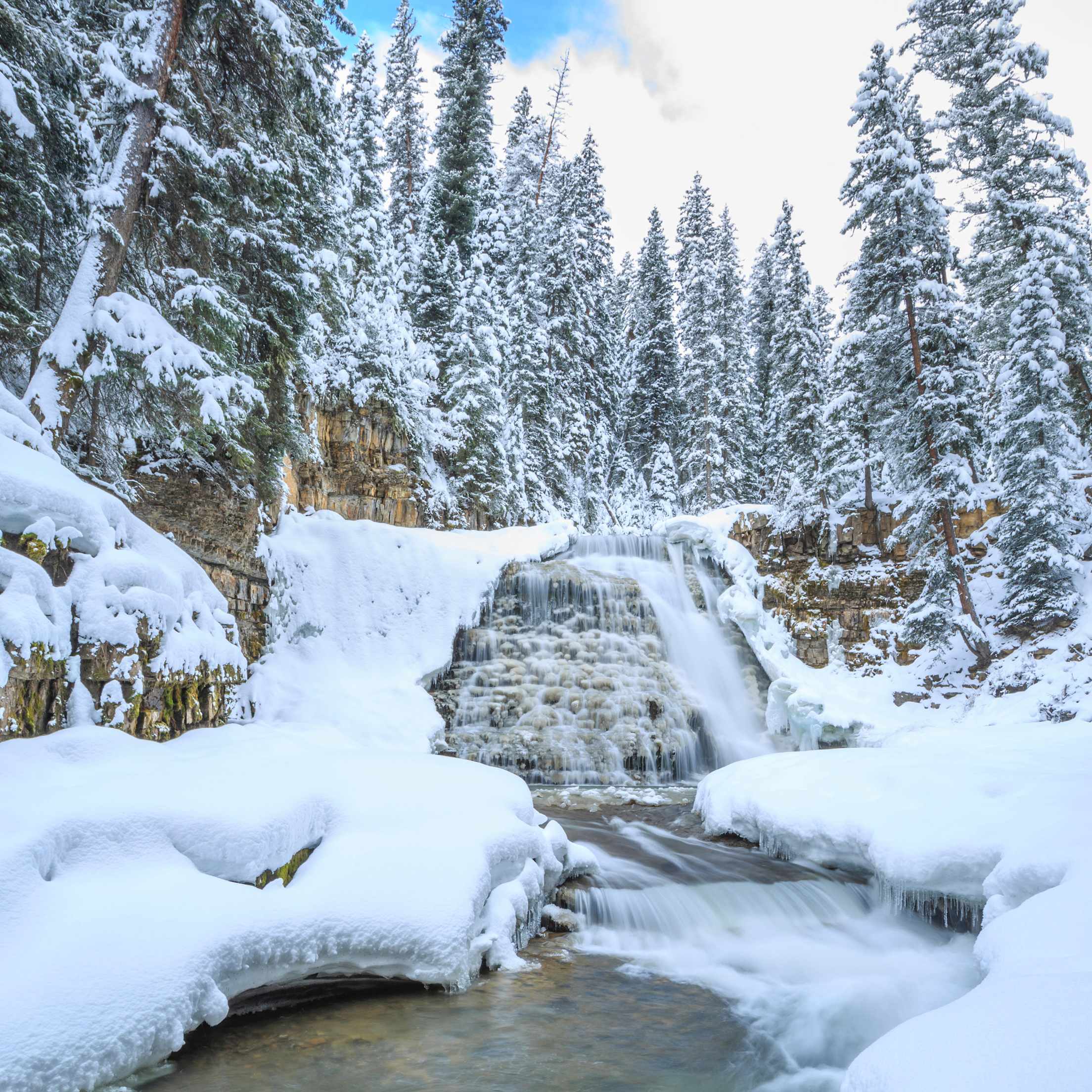
8 Must-Do Winter Activities in the West
See frozen waterfalls, watch for whales, cozy up in a cabin, and more this season.

From Alaska to Arizona, the West offers plenty of ways to fill your calendar. Whether it’s whale watching off the shores of Monterey or careening down the slides of an ice castle in Utah, there’s something for everyone.
Pedal through the snow.
Cycle across snow-covered meadows and along freshly groomed trails on a fat bike (essentially a mountain bike with wider tires that offer more traction in difficult terrain). Locals and visitors alike take to two wheels in Lake Tahoe’s Tahoe Meadows, as well as Spooner Summit on the lake’s east shore.
In Missoula, Montana, the Bureau of Land Management’s Twin Creeks features approximately 16 miles of groomed trails that are ideal for fat biking, while in Utah, Park City’s Round Valley offers a network of designated cycling routes. Six miles of the city’s 28-mile Historic Rail Trail are also kept groomed in the winter months to connect the heart of Park City with the Round Valley trail system. Riders often begin at the White Pine Touring Nordic Center, which rents fat bikes and offers guided fat bike tours.
Go wildlife watching.
Not every outdoor creature hibernates come winter. Look for California condors circling the skies in the state’s Pinnacles National Park, and moose can often be seen along rivers and streams on the outskirts of Anchorage, Alaska. Gray whales migrate off the shores of California’s coast from January through March. Grab your binoculars and head to the coastline in Monterey County, a region that also boasts tide pools brimming with purple sea urchins and giant sea anemones. Winter is one of the best seasons to see wolves in Yellowstone National Park—especially in the Lamar Valley—when often snowy landscapes make them easier to spot. Bison, elk, and river otters are typically active in the park as well.

Ice skate outdoors.
Gliding on two blades is one of winter’s great pleasures, especially when it takes place outside. Southern Alaska is often awash in naturally frozen ice once the temperatures drop. Anchorage’s Westchester Lagoon is a wonderful spot for skating on wild ice. (It’s also a prime place for seeing wildlife such as bald eagles and moose.) Afterwards, you can toast s’mores over one of the lake’s enormous warming barrels. At California’s Yosemite National Park, the Curry Village Ice Rink is a seasonal mainstay through early March, with skate rentals, fire pits, and incredible views of Half Dome, the park’s beloved quartz monzonite beauty.
Set out on a snow-free hike.
While white powder blankets many areas in the West, there are plenty of places to enjoy snow-free hiking. Just outside of Phoenix, Arizona’s Superstition Wilderness Area has a robust trail system and typically mild temps throughout the season. The nine-mile Miners Needle Loop offers mountain views as well as saguaro cacti.
In California's Mendocino County, embark on an easy 2.5-mile round-trip trek among lofty redwoods and green flora on Van Damme State Park’s Fern Canyon Trail. When you’re done, rest your feet and picnic at nearby Van Damme State Beach.

Attend a winter festival.
From lighted artworks illuminating downtown Napa to racing downhill in a self-made cardboard sled—a highlight of Wyoming’s Pinedale Winter Carnival—festivals are the perfect way to break up any annual doldrums.
At the North Lake Tahoe Snow Fest, which takes place in various spots around Tahoe City for 10 days beginning in late February, you can partake in a polar bear swim, enter a curling competition that uses milk jugs, or cheer on competitors at one of the largest cross-country ski races west of the Mississippi.
For nearly a century, Anchorage’s Fur Rendezvous (a.k.a. “The Fur Rondy” to locals) has been capturing Alaskans’ pioneering spirit with dozens of events and activities. Along with the Great Alaska Talent Competition, there’s a running of the reindeer, in which antlered animals and race participants run side by side, and the signature Blanket Toss—an ancient Alaska Native tradition in which a group pulls on the sides of a large blanket, hurling one person up into the air at a time. A carnival, grand parade, and fireworks extravaganza are also on the lineup.
Curl up in a cabin.
Cozy up in a quiet park under a warm blanket with hot chocolate and a good book. Many state parks throughout the West offer cabins for overnight stays in winter. Just 40 miles north of San Francisco, Samuel P. Taylor State Park is home to a handful of cabins that sleep up to five people each. Tucked among the park’s majestic redwoods, the units come equipped with bunk beds (bring your own sleeping pad), covered porches, and small electric stoves. Restrooms are separate.
Northwest Nevada’s Wild Horse Recreation Area is a remote desert landscape replete with sagebrush and featuring a large lake that often freezes over, making ice fishing and skating possible. Its trio of ensuite cabins have heating, a mini-fridge and microwave, and sleeper sofas, not to mention incredible views of the reservoir itself.

Gaze at a frozen waterfall.
Waterfalls are remarkable anytime of year, but they tend to be especially mesmerizing in winter, when their cascades transform into icy domes and crystal columns that sparkle and shine. In Big Sky Montana, Ousel Falls often freezes over in winter. It’s accessible via a 1.6-mile round-trip hike along the South and West forks of the Gallatin River. Waterfall Canyon Falls in Ogden, Utah, cascades over 200 feet, often creating a curtain of icy blue in the winter. The 2.4-mile round-trip hike to reach it can be challenging, so allow extra time for the trek. While neither hike generally requires traction devices for your shoes, it’s a good idea to have them—especially if there’s ample snow cover.
Immerse yourself in a winter wonderland.
Marvel at hand-carved ice sculptures, get lost in a frozen maze, or zoom down exhilarating ice slides in environments created entirely from ice and snow. Frozen attractions such as the Ice Castle in Midway, Utah, bring winter wonders to a whole new level. Along with caverns and crawl tunnels, intricate archways and fountains, frozen thrones and LED-lit sculptures, this enchanting site also offers sleigh rides throughout January and February. The castle’s opening is weather dependent, so check ahead.
In Fairbanks, Alaska, the Aurora Ice Museum is accessible year-round and kept at 25 degrees Fahrenheit. Peruse the various ice sculptures, warm up with a drink at the bar, and then soak in a natural hot spring. (The museum is part of the larger Chena Hot Springs Resort.) Want to see the Northern Lights? The property also happens to be a prime spot for a chance to see them in action.